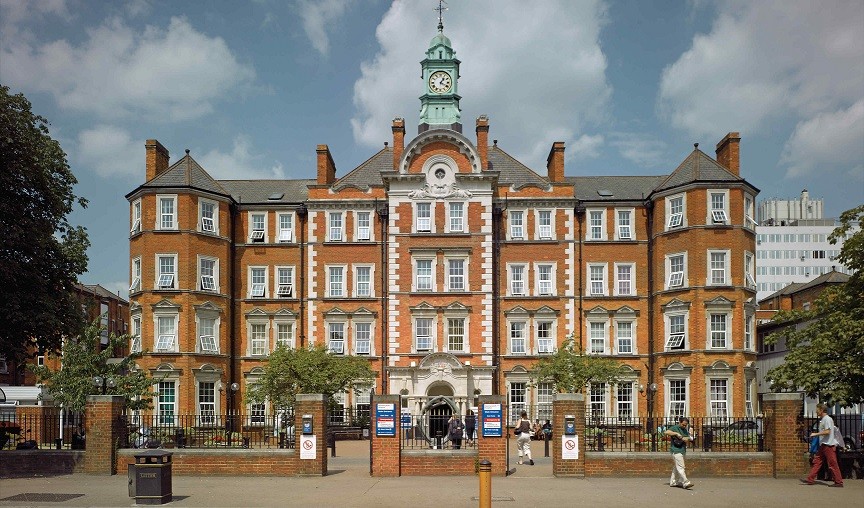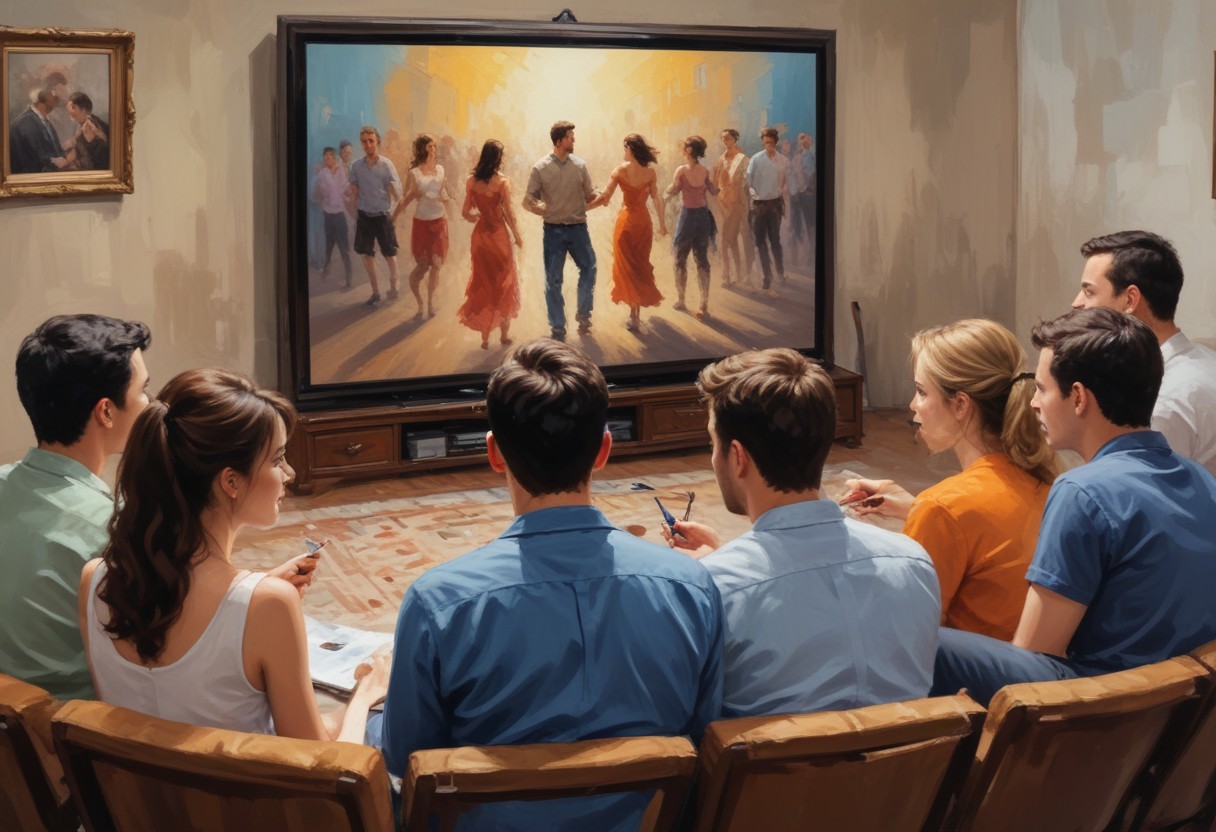Top 15 Most Famous Philippines Movies Of All Time
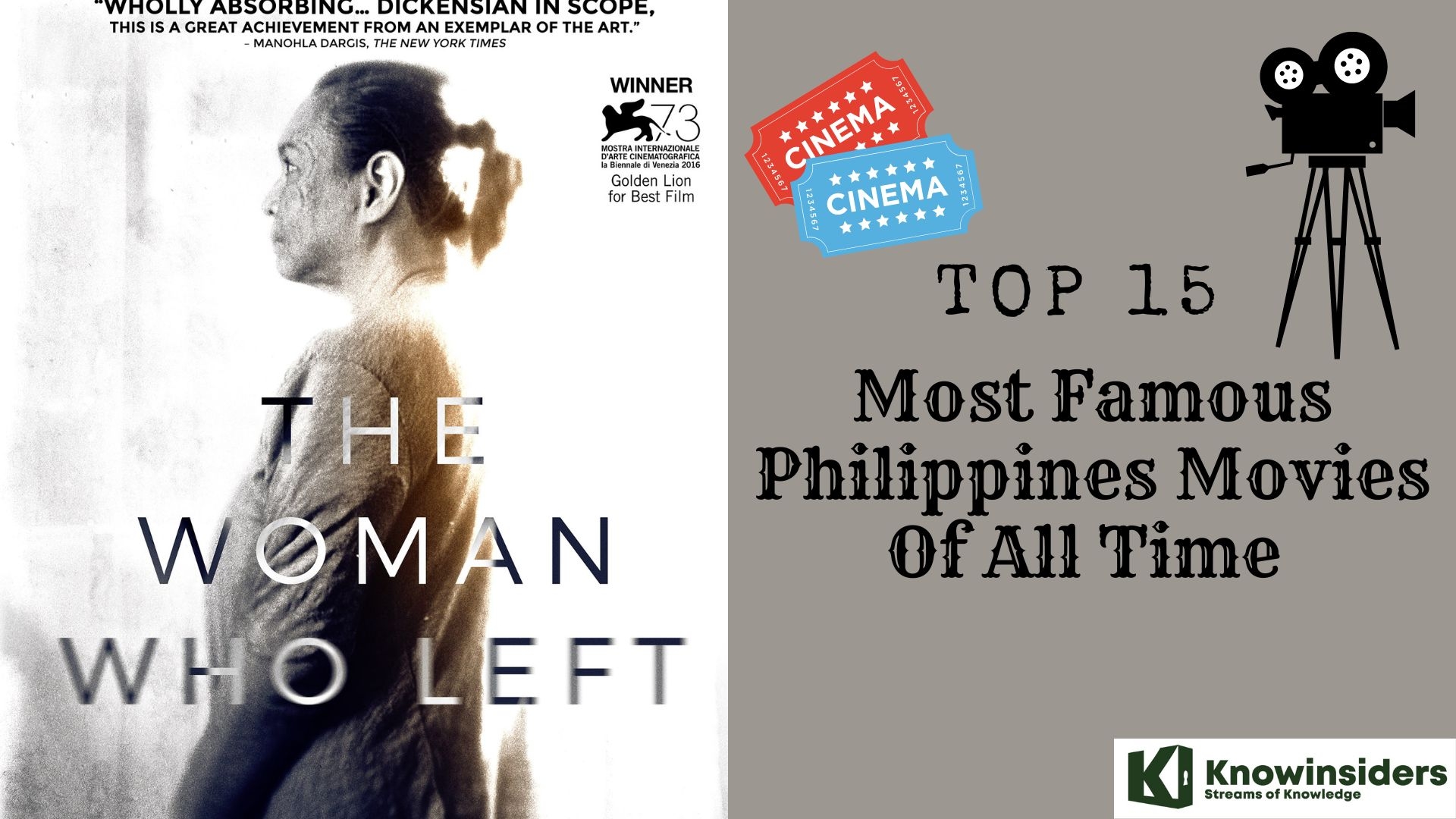 |
| Top 15 Most Famous Philippines Movies Of All Time Knowinsiders.com |
| Table Of Content |
When you think about Asian cinema, it’s easy to picture Japanese and Chinese films, and Bollywood. In countries like these, film industries are heavily funded by the government. That’s because cinema is an important vehicle for exporting cultural identity, and sometimes political messages, to the rest of the world.
Philippine cinema has not gone unnoticed in recent years: it’s scored big wins at some of the world’s most prestigious film festivals. If you’re at all curious about life in the Philippines, or are up for a sensory adventure into this colorful country, here are the 15 most famous Philippines movies of all time.
Philippine Cinema: An Overview
The cinema of the Philippines is rarely discussed, if not, never really received the spotlight it deserved. Unknown by many, Filipino films feature some of the most innovative and exciting content that puts some of the multi-million dollar summer blockbusters from Hollywood to shame. They are supremely low-budget. The most expensive Filipino movie costs $3-million. Unmatched to the cost of a single Game of Thrones episode. It just goes to show that resourcefulness thrives in creative storytelling.
Brief History of Film Industry in the Philippines
Another European import is film. Two years after successfully launching cinema, the Lumiere brothers’ cinematographe film camera and projector invention made its way to Philippine shores via the efforts of a Spanish soldier named Carlo Naquera. With the cinematographe, he brought several Spanish-language short films and showed them to select audiences during 1897. When he ran out of short films to screen, he brought the cinematographe around and shot local scenes then showed them as brief documentaries. Seeing their own selves on the big screen prompted Filipinos to love this medium more. Thus began the Filipinos’ undying love for this art form. Thus, with the advent of another period of colonial history in the country—the American period—short films from America were soon imported and shown in the early theaters in Manila, particularly those located around Escolta and Intramuros, during the early 1900s.
Since it was an audiovisual art form similar to what Filipinos then had already been accustomed to and was already creating—namely the stage theater-originated musical shows such as the “zarzuela”—it was no surprise that film-watching became a popular form of entertainment in the late 1800s and early 1900s. In fact, the very first Filipino-produced film, Jose Nepomuceno’s Dalagang Bukid (1919), was actually a movie adaptation of a popular musical stage play created by Hermogenes Ilagan starring the popular singer-stage actress who originated the role, Atang Dela Rama. The film ushered in another dimension to Dela Rama’s illustrious career as she would star in many more, as the film also designated Nepomuceno the title “Father of Philippine Cinema.” Because of such early artistic evidence, the Philippines is hailed as having developed one of the earliest film industries in the Asian region.
During the Spanish period, Filipinos who didn’t understand the language of the movie didn’t find it a hindrance to appreciate the imagery and the music that accompanied the screening. This is what makes a film a universal and powerful medium of information and communication dissemination. But since the American period mandated Filipinos to learn the American language and culture, it was no wonder that Filipinos embraced Hollywood film products that easily during those early times. This is why people sometimes joke that we Filipinos were under “400 years of Catholicism and 50 years of Hollywood:’ resulting in the Filipino of today.
Film’s primary purpose in the Philippines rooted in the entertainment factor, but this changed when the Japanese colonial period began. Seeing film as a viable form of mass media communication, the Japanese led the production of propaganda films and tapped Filipino directors and actors to make them. The most popular of such films was Dawn of Freedom (1944) which highlighted the World War II aim of the Japanese to have an “Asia for the Asians:’ It was co-directed by another pioneer of Philippine Cinema, Gerardo de Leon, and starred Fernando Poe Sr. plus other Japanese and Filipino actors. Emerging from the war-torn culture of the Philippines, especially Manila, gripping narratives featuring the war, lower-class underdogs and ordinary people as heroes for the people emerged in the cinema. Such themes and characterizations are still popular among Filipinos today when watching local or foreign films.
But as with the print industry, things changed during the Marcos dictatorship. Film was one of the most heavily censored media during those times, with filmmakers even changing the titles of their films if President Marcos or the First Lady Imelda Marcos found them offensive. Yet this era also produced a batch of the most artistic and thought-provoking films that somehow dared to show the real state of the Philippines and highlighted the drive of the Filipino people to be free from their daily struggles. Directors who became our National Artists for Film during this era included influential filmmakers Lino Brocka and Ishmael Bernal.
After the 1986 EDSA Revolution, the Philippine film industry became freer again, and the early independent studio producers blossomed into the leaders of film production today. The most notable of this batch is Lily Monteverde’s Regal Films followed by another family-ran business Viva Films. During the 1990s, ABS -CBN started their own film production company, Star Cinema, and the move was duplicated by GMA-7 in the 2000s with GMA Films. Today, most of the mainstream films being produced locally come from these studios.
Filipino Movies: Hard to Categorize
But while many countries are often categorized by the type of films that made them popular (e.g. martial arts movies from Hong Kong, action-adventure films from America), Philippines’ is hard to pin down. They defy categorization.
Most likely as a result of its archipelagic landscape where every region have their respective flare uniquely theirs. For example, films from the Luzon and Mindanao regions are embedded on their location and own set of principles.
This could also be one of the major reasons why many critics of Philippine cinema cannot identify a “national identity” of the movies, more troubling since the country was one of the earlier pioneers of cinema itself. Its history goes as far back as 1897, a shy away when Georges Méliès debuts his iconic films.
What Are The Most Famous Filippino Movies Of All Time?
1. Goyo: The Boy General
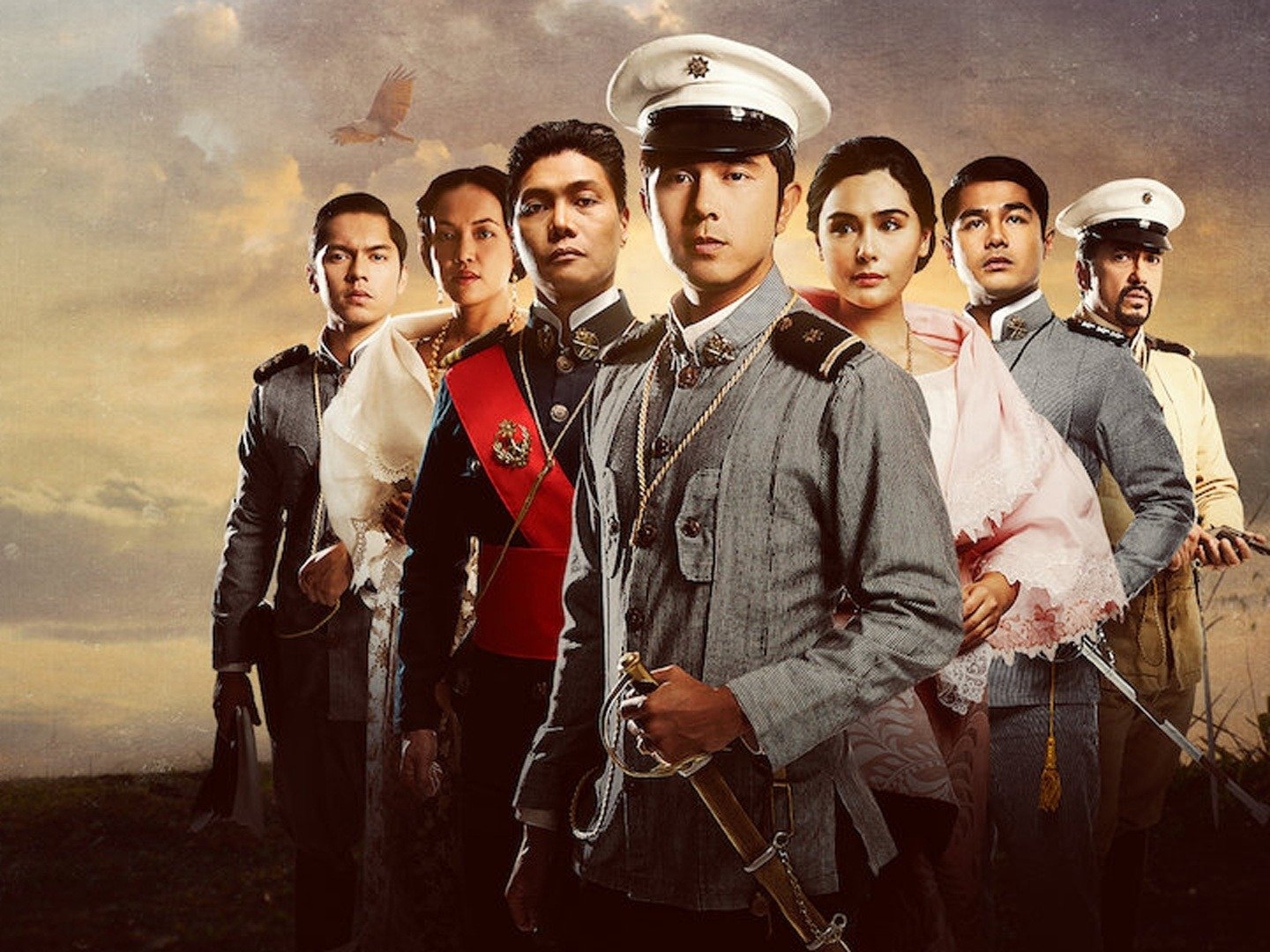 |
| Photo: Flixster |
Goyo: The Boy General (Filipino: Goyo: Ang Batang Heneral), or simply Goyo, is a 2018 Philippine epic war drama film starring Paulo Avelino as the titular "Boy General", Gregorio del Pilar, who died during the historic Battle of Tirad Pass in the Philippine–American War. It was written, directed, edited, and scored by Jerrold Tarog, and is a sequel to the 2015 film Heneral Luna, which chronicled Antonio Luna's life. Additional members of the ensemble cast include Carlo Aquino, Mon Confiado, Epy Quizon, Gwen Zamora, Empress Schuck, Alvin Anson, and Rafa Siguion-Reyna. It was released on September 5, 2018.
In the mid-2010s, the Philippines saw a rise in historical films thanks to Jerrold Tarog’s Heneral Luna (2015), a biopic about slain General Antonio Luna. That film, which fittingly examines the hero’s bad temper and machismo nature, is fascinatingly downplayed in the follow-up Goyo: The Young General (2018) – also directed by Tarog. The movie, which stars Paolo Avelino as General Gregorio Del Pilar, is a meditative exploration on what defines a hero. It begs to ask if the hero is determined by his achievements or his nationalism. It’s a historical movie that commits to disregard glamorization about its subject matter.
2. Toto (2015)
 |
| Photo: MMFF New Wave Trailer |
John Paul Su’s Toto opens in a somber note, with news footage of Yolanda wreaking havoc on Tacloban.
What ensues after is a complete shift in mood. From stark tragedy, the film immediately changes focus, concentrating on Toto (Sid Lucero), who just woke up from a good night’s sleep, now dancing in his underwear before dressing up for his U.S. Visa interview. The film is bound to get silly.
In a way, the film’s protagonist, like Dorothy’s dog with whom he shares a name, is taken for a ride towards an Emerald City that can be full of either promises or disappointments. Toto is best seen as a caricature of a nation’s dogged obsession over greener pastures found abroad.
A lot of its parts do not make sense when pitted against reality. However, the film isn’t meant to perfectly mirror real life. It opts for exaggerations, enunciating what already is patently absurd to make a pressing critique of the hopelessness with which others view their country.
Sid Lucero won Best Actor at the 19th Los Angeles Comedy Festival for his role in TOTO, a film that takes an often light-hearted look at the Filipino obsession with the American dream. The sole breadwinner of his family, Antonio “Toto” Estares works at a Manila hotel as a room attendant. Desperate to earn a visa and move to America, Estares enters one harebrained scheme after the other, putting himself, his relationships, and his dignity at risk.
3. Insiang (1976)
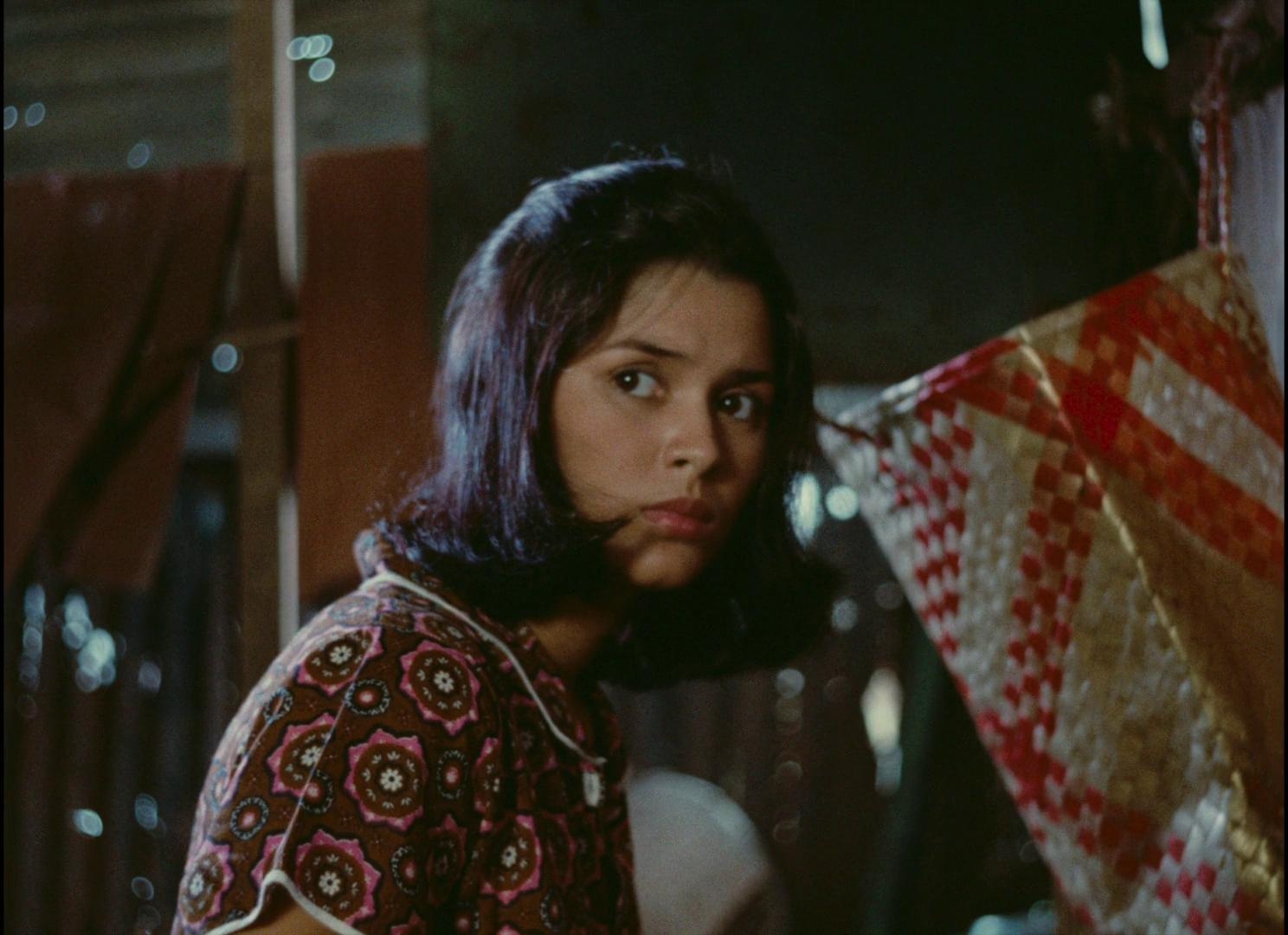 |
| Photo: IMDb |
Insiang is a 1976 Philippine drama film directed by Lino Brocka. Its screenplay, written by Mario O'Hara and Lamberto E. Antonio, is based on O'Hara's teleplay of the same name. Set in the slums of Tondo, Manila, the film stars Hilda Koronel as the eponymous character: the young daughter of a resentful mother (Mona Lisa), whose much-younger lover (Ruel Vernal) rapes her. After her assault and the betrayal of her own lover (Rez Cortez), Insiang seeks revenge. A representation of urban poverty, the film explores themes of betrayal, revenge and despair.
It is the first Philippine film to be shown at the Cannes Film Festival, and to use Tondo as a shooting location. A box-office failure, Insiang received good reviews from critics (some of whom regarded it as one of Brocka's best). The film's rights were transferred to the Film Development Council of the Philippines in 2015 by producer Ruby Tiong Tan for the council's discussion with Martin Scorsese's The Film Foundation, a nonprofit organization dedicated to film preservation, about its restoration. The restored version was selected for screening in the Cannes Classics section of the 2015 Cannes Film Festival, and played at a number of other film festivals.
nsiang is one of the most influential Filipino films ever made for its powerful feminist message. Its 1976 release immediately made Brocka one of the leading voices in Philippine cinema. Parasite director Bong Joon-ho credits Brocka as an inspiration in his creative projects.
4. Himala (1982)
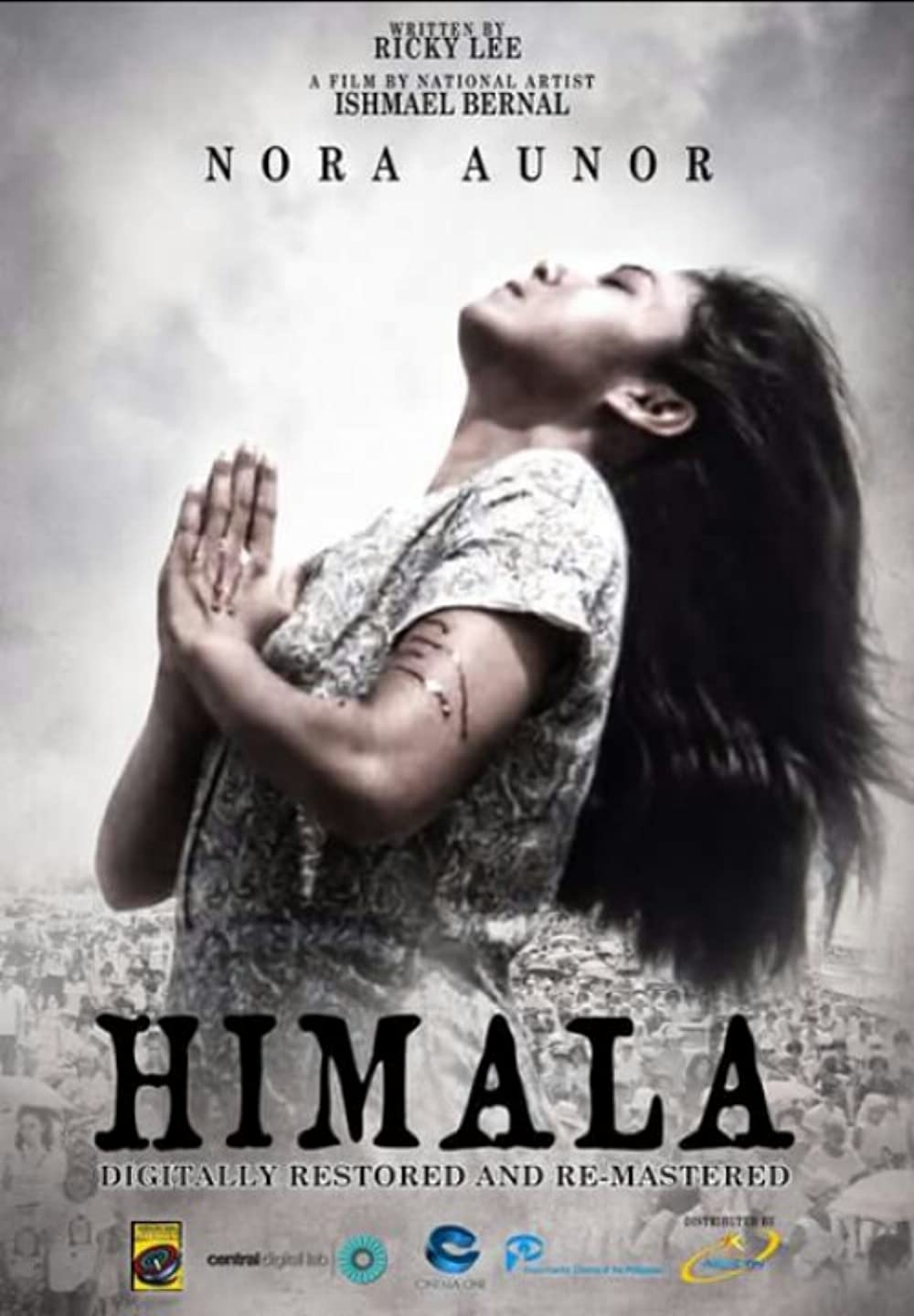 |
| Photo: IMDb |
Himala ("Miracle") is a 1982 Filipino tragedy film directed by Ishmael Bernal and produced by the Experimental Cinema of the Philippines. The film's script was written by Ricky Lee based on a series of alleged Marian apparitions to schoolgirls on Cabra Island in the province of Occidental Mindoro, which took place from 1966 to 1972.
Himala was filmed entirely in the Philippine province of Ilocos Norte in just three weeks with a budget of only ₱3 million. The film premiered at the 1982 Metro Manila Film Festival, and in 1983, became the first Filipino film to be included in the "Competition Section" of the Berlin International Film Festival. Since then, Himala has been exhibited in a number of film festivals around the world.
On 11 November 2008, Himala won the Viewer's Choice Award for the Best Film of All Time from the Asia-Pacific Region in the 2008 CNN Asia Pacific Screen Awards beating nine other films voted by thousands of film fans around the world. The ten finalists were chosen by critics, industry insiders and actors.
Although its initial release gave rave reviews, Himala is widely considered one of the greatest Filipino films of all time. Nora Aunor garnered worldwide popularity and is best known for her performance in the film as the purported seer and healer Elsa. Her portrayal is considered by most Filipino critics as the best of her career. In 2012, on its 30th anniversary, Himala is the first film to be restored and remastered by ABS-CBN Film Archives and Central Digital Lab as part of ABS-CBN Film Restoration Project. The restored version premiered at the 69th Venice International Film Festival.
5. Metro Manila (2013)
Metro Manila is 2013 British independently-produced crime drama film directed by Sean Ellis, set in the Philippines and with dialogue mainly in Tagalog. Ellis also co-produced and co-wrote the film. The film was selected as the British entry for the Best Foreign Language Film at the 86th Academy Awards, but was not nominated.
Metro Manila had its International premiere at the 2013 Sundance Film Festival on 20 January 2013. It was also released on 17 July 2013 in France, 28 August 2013 in Belgium, 29 August 2013 in the Netherlands, and 20 September 2013 in the UK. It had its Philippine premiere on 9 October 2013.
The film was re-released with special screenings to raise money for the victims of Typhoon Haiyan/Yolanda that had hit the Philippines and killed close to 6000 people. Ellis said: "The people of the Philippines were tremendously supportive during the making of Metro Manila, and it's only right that we should now use the film to raise money to help the victims of this terrible disaster."
Noted Spanish director Pedro Almodóvar named this one of his favorite movies of 2013. Metro Manila opens with one family’s decision to leave their rice-farming roots in the countryside, in hopes of a better life in the capital. However, they quickly get entangled with Manila’s murky side. The head of the family forms a tense relationship with his partner at an armored truck company, while his pregnant wife lands a job as a bar hostess for a Makati nightclub. The movie took home the Audience Award at the 2013 Sundance Film Festival.
6. Ma’ Rosa (2016)
Ma' Rosa is a 2016 Filipino drama film directed by Brillante Mendoza. It was selected to compete for the Palme d'Or at the 2016 Cannes Film Festival. At Cannes, Jaclyn Jose won the award for Best Actress. It was selected as the Filipino entry for the Best Foreign Language Film at the 89th Academy Awards but it was not nominated.
Rosa (Jaclyn Jose) is married to Nestor (Julio Diaz) with whom she has four children. Rosa's family runs a sari-sari store in a neighborhood in Manila. The income from the small convenience store business alone isn't enough to meet the family's daily needs, so illegal drugs particularly "ice" or crystal meth are also sold at Rosa's store. One day police officers arrest Rosa and Nestor for selling drugs and ask them for "bail money" or a bribe for the couple's release. Rosa's children, left on their own to deal with the struggles of daily life, find a way to free their detained parents.
Director Brillante Mendoza decided to make the film to tackle the issue of small-scale drug selling in the Philippines which he says is really happening in the country and described the situation as alarming. Mendoza noted that the concept of corruption which is a subject of the film appeals to a worldwide audience since he says that corruption is happening in many different countries on a different scale.
Ma' Rosa was originally titled Palit Ulo. The film was shot in Mandaluyong during the rainy season of 2015 and was supported by French distributor firm, Film Distribution.
7. Kid Kulafu (2015)
Kid Kulafu is a 2015 Filipino biographical sports drama film produced and released by Star Cinema together with Ten17P owned by the film's director Paul Soriano. The film dramatizes the life of the boxing superstar Manny Pacquiao during his childhood. It stars Buboy Villar, Alessandra De Rossi and Cesar Montano.
Kid Kulafu was the second biopic of Pacquiao 9 years after Pacquiao: The Movie, which had focused on his early career as a boxer and stardom.
Kid Kulafu as early life boxing of Emmanuel "Manny" Pacquiao or Kid Kulafu. Before he became one of the world's greatest boxers Manny Pacquiao was a young boy living a hand-to-mouth existence, trying to survive from one day to the next. When he discovers his natural talent for boxing, he embarks on a brutal and intense journey that takes him from the mountains of the Philippines to the streets of Manila, and must risk everything to become a champion - for himself, his family, and his country.
Focusing on the first 15 years of the life of boxing superstar Manny Pacquiao, Kid Kulafu shows the boxer’s humble roots, as he attempts to eke out a living on the streets of General Santos City. His natural talent for boxing appears to be his only way out of poverty, but it’s a brutal journey to stardom. Pacquiao himself was involved in the making of the film, organizing key interviews and tweaking the script for accuracy. Robert Villar, who plays the young Pacquiao, bagged the Achievement in Acting Award at the Guam International Film Festival.
8. Sana Maulit Muli (1995)
Translated as “I wish it happens again”, Sana Maulit Muli tells the story of Agnes (played by Lea Salonga) who’s invited to live with her estranged mother in California. While Agnes is reluctant to go, her long-time boyfriend Jerry encourages her to go so that he can focus on his career as an advertising executive.
Agnes struggles to survive in the United States and tries several times to return to the country, but Jerry insists on prolonging her stay as he struggles to save up for their wedding and to support his family.
Even when Agnes starts working as a caregiver, she tries to convince Jerry to let her return as she now has the money to support herself. But as the man of the relationship, Jerry refuses, leading to the classic rom-com conflict, i.e. the break-up.
When Jerry travels to the United States intending to get her back, he’s overwhelmed by the cultural difference between the two countries. Despite this, they still manage to mend their relationship, but ultimately Jerry can’t adapt to America and returns home.
Days later, Jerry returned to his former job in the advertising agency. After work, he walks alone in the busy street, and miraculously, he notices that Agnes has returned to the Philippines too. Although painfully predictable, Sana Maulit Muli remains a popular guilty pleasure for many Pinoys at home and Overseas Filipino Workers (OFWs).
9. Urduja (2008)
This animated film portrays the life and struggles of Princess Urduja, a warrior princess in Pangasinan – a coastal province located in the Ilocos Region of Luzon. Actors Regine Velasquez, Cesar Montano, Eddie Garcia, Johnny Delgado, and Jay Manalo formed the cast, giving familiar voices to the lead characters.
In the story, Princess Urduja is the only daughter of the Tawilisi chief, Lakanpati. He wants her to marry Simakwel, someone she despises. Instead, Urduja falls in love with Limhang, a Chinese pirate on the run from his nemesis, Wang.
This unlikely union worries Lakanpati and drives Simakwel into madness. Afraid of losing the Crown and Urduja, Simakwel does everything to drive Limhang away. Eventually, Limhang’s good deeds and genuine kindness win the respect of the Taliwisi tribe.
When Wang tracks down Limhang, he surrenders voluntarily, assured that Wang won’t attack the Tawilisi. In the end, the evil Wang attacks the tribe anyway, with Urduja and her people bravely defending the onslaught. During the ensuing battle, Limhang escapes and defeats Wang with the help of the neighbouring Badjaos people.
10. Evolution of a Filipino family (2004)
Director Lav Diaz’ epic masterpiece took nearly ten years to make and more than justifies its running time. At a staggering 10 hours and 43 minutes, it would be easy to dismiss this Filipino classic as self-indulgent. But Evolution of a Filipino Family is not just a film or a documentary, it’s a cinematic experience meant to test the viewer’s mental and physical endurance.
The film tells the story of a poor farming clan in the 1970s and 1980s. Mirroring the fortunes of the Philippines, the story follows the rise and fall of the farming family during and immediately after the rule of Ferdinand Marcos.
Diaz explained, “My films are so long because I don’t fit with industry conventions anymore. It’s free. So I am applying the theory that we Filipinos aren’t governed by the concept of time. We are governed by the concept of space and nature. In the Philippines, you’ll see Filipinos hanging out a lot. We are not that productive. It’s all about space and nature.”
11. Moral (1982)
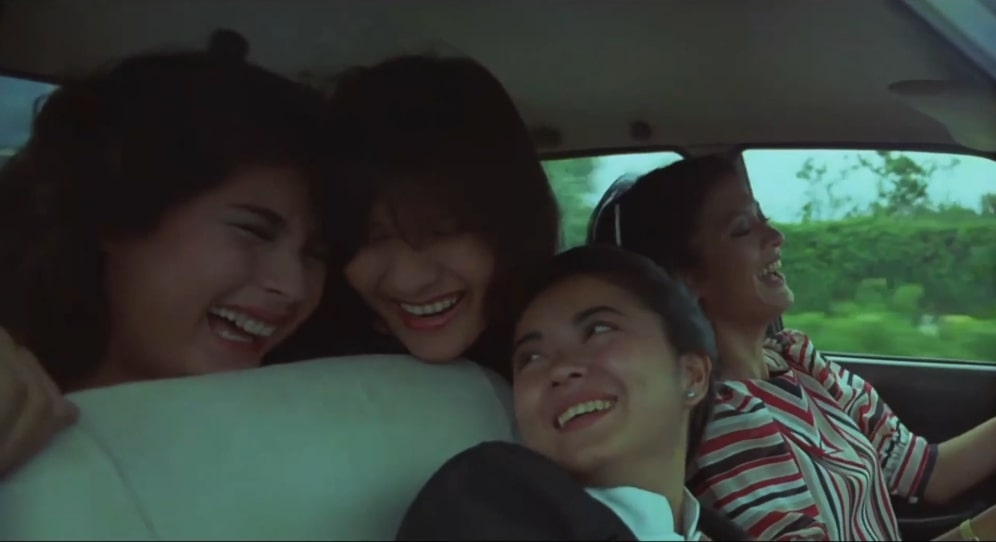 |
| Photo: SINEGANG.PH |
Marilou Diaz-Abaya’s Moral (1982) can easily be assessed as a comedy-drama movie about a group of female friends overcoming adult struggles. But on a closer look, it’s surprisingly braver than you think. Released at a time when female representation in Philippine cinema are mostly reduced to their attachment with a male/ patriarchal hero, Moral paints its women as fearless, free-spirited members of a society driven by conformities. It’s a landmark piece of feminist cinema from the Philippines that holds no bar in discussing silently-talked about struggles and sensitive issues during the 1980s such as abortion, same-sex relationships, and family planning.
Moral is a 1982 Filipino coming-of-age drama film directed by Marilou Diaz-Abaya and written by Ricky Lee. It is the second in a loose trilogy of feminist films by Diaz-Abaya and Lee which discusses women's issues, along with Brutal (1980) and Karnal (1983). Set in contemporary times in the Philippines, the film stars Lorna Tolentino, Gina Alajar, Sandy Andolong and Anna Marin as a group of friends and follows the course of their lives over the course of several years after they graduate from college. A "loosely structured, observational drama", the film discusses several topics that Diaz-Abaya and Lee saw as taboo at the time, such as abortion, rape, and gender inequality in the context of the changing morals of the time. This is Seven Star Productions' last feature film.
While it initially had an underwhelming reception from both critics and the general public upon its release, Moral has grown in stature over time and is now considered by some critics as one of Diaz-Abaya's best works. Both Diaz-Abaya and Lee consider the film one of the most personal of their many collaborations. It was restored by the ABS-CBN Film Restoration Project in 2017, premiered at that year's Cinema One Originals Film Festival, and was subsequently shown at several film festivals around the world.
12. The Woman Who Left (2016)
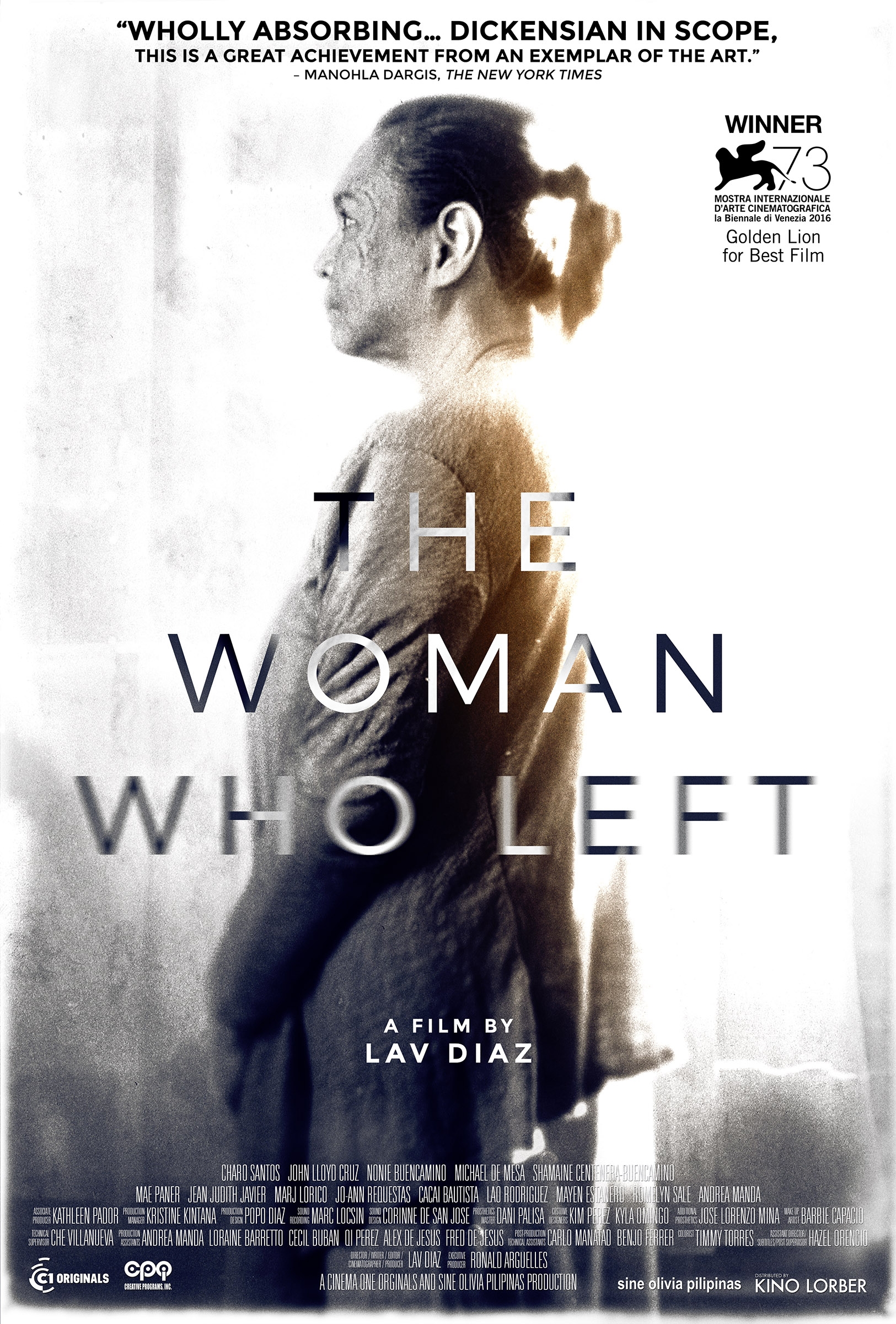 |
| Photo: IMDb |
The Woman Who Left (Filipino: Ang Babaeng Humayo) is a 2016 Philippine drama film written, produced, edited, and directed by Lav Diaz. Filmed entirely in black-and-white, it was selected to compete in the main competition section at the 73rd Venice International Film Festival where it won the Golden Lion. Although it has received a very limited release, the film has received nearly universal acclaim from critics.
The Woman Who Left was the first film made by Charo Santos-Concio when she returned to acting after stepping down as President and CEO of ABS-CBN Corporation.
Horacia Somorostro (Charo Santos-Concio) was released in 1997 after being imprisoned for a crime she did not commit. Although Somorostro reunites with her daughter, she learns that her husband is now deceased and her son is missing. She realized that a thing remains unchanged - the power and privilege of the elite. This belief is cemented when Somorostro later found out that her former rich lover, Rodrigo Trinidad (Michael de Mesa) was the one who framed her for a crime. She learns that Trinidad is forced to stay within his house like his friends due to kidnapping incidents targeting the rich. To the ruling class, the kidnappings are the most serious problem in the country's history. Somorostro begins to plot her revenge amidst the crisis.
13. Block Z (2020)
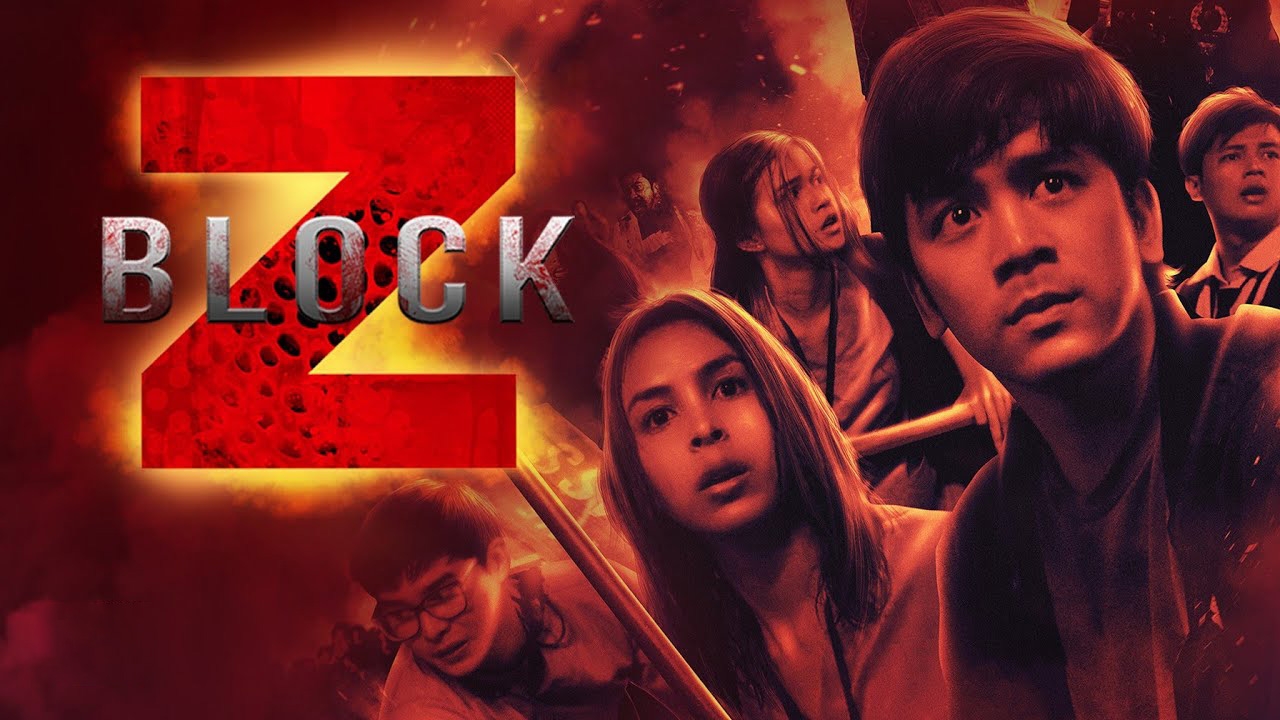 |
| Photo: FPT Play |
While 2020 signalled the start of the pandemic, it also ushered in a new wave of zombie films in Asia. Films like #Alive and Peninsula were joined in the genre by Pinoy director Mikhail Red’s Block Z. Fittingly, Block Z follows a group of university students who try to survive a zombie pandemic in the Philippines, drawing comparisons to 28 Days Later, Train to Busan, and World War Z.
PJ, a pre-med student, and her friends investigate the death of a patient who exhibited symptoms of rabies. Things take a horrific turn when the patient comes back from the dead and infects the people on campus, causing a lockdown and trapping the students inside.
14. Boy Golden: Shoot to Kill (2013)
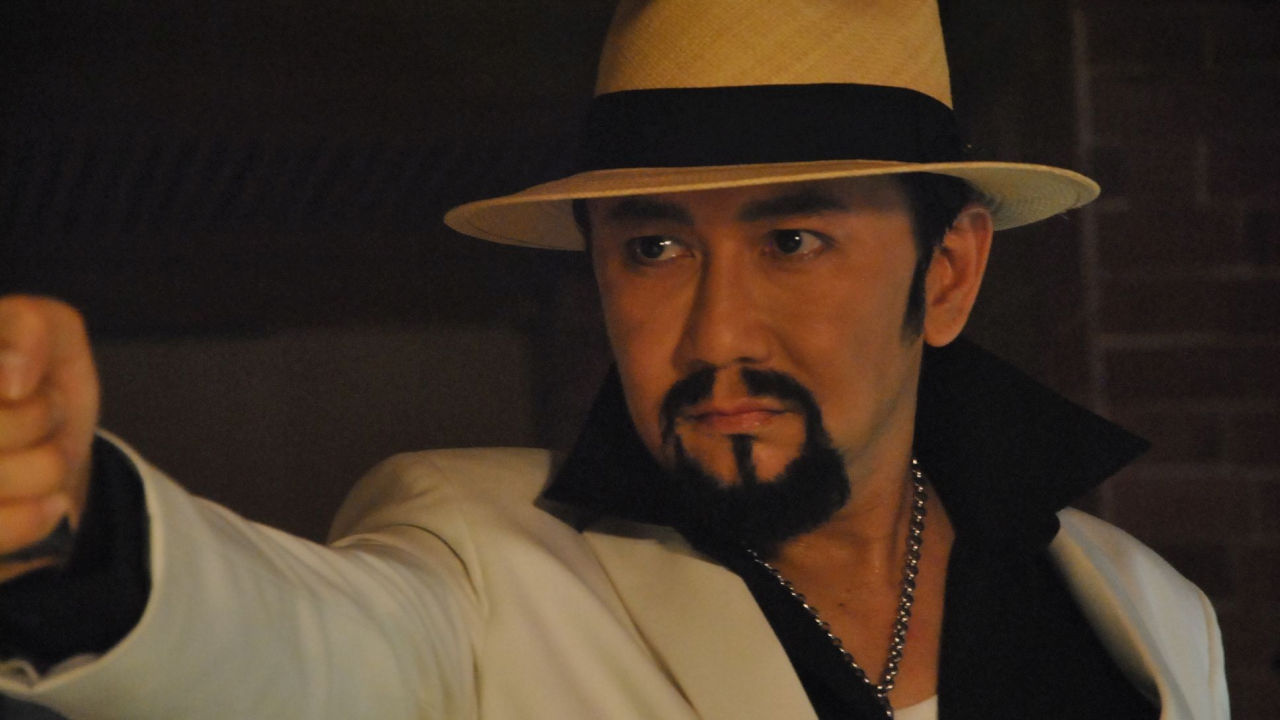 |
| Photo: Far East Film Festival |
While the United States has The Godfather trilogy and Brazil City of God, the Philippines has Boy Golden: Shoot to Kill. This Philippine action biopic is loosely based on the life of Arturo Porcuna as he rises through the Manila underworld in the 1960s.
Growing up as Boy Anino, Porcuna ascends to head of the notorious Bahala Na gang. But when rival gangster Tony Razon kills Porcuna’s entire gang and family, he’s forced into exile. Returning under a new alias, Boy Golden, Porcuna wreaks havoc on the city’s toughest gangsters, with Razon top of his list.
15. On The Job (2013)
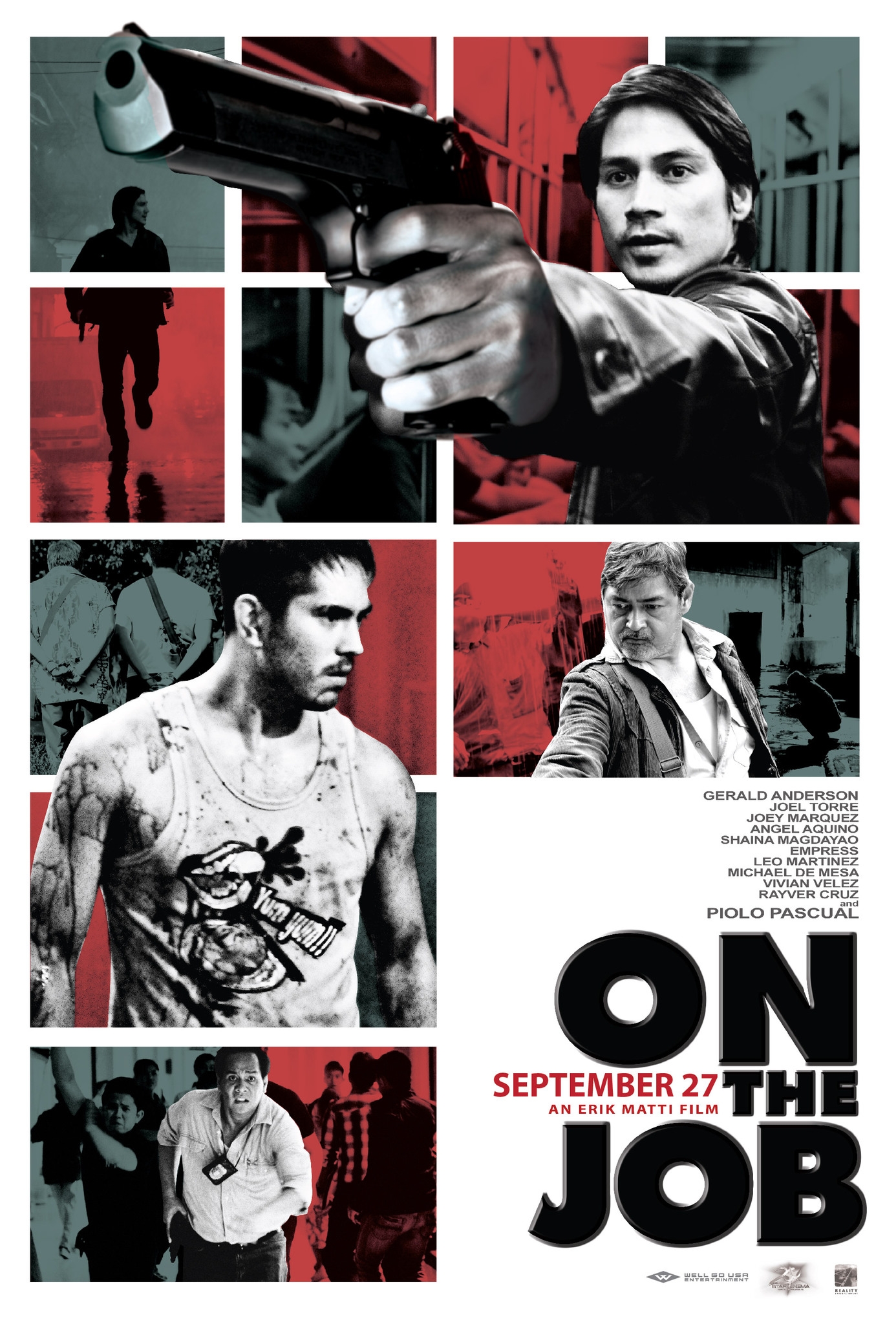 |
| Photo: IMDb |
On the Job (abbreviated OTJ) is a 2013 Filipino neo-noir action thriller film written and directed by Erik Matti, who co-wrote the screenplay with Michiko Yamamoto. Starring Gerald Anderson, Joel Torre, Joey Marquez and Piolo Pascual, it tells the story of two hit-man prisoners (Anderson and Torre) who are temporarily freed to carry out political executions, and two law enforcers (Marquez and Pascual) tasked with investigating the drug-related murder case connected to the prison gun-for-hire business. The film co-stars Angel Aquino, Shaina Magdayao, Empress Schuck, Leo Martinez, Michael de Mesa, Vivian Velez, and Rayver Cruz.
The inspiration for On the Job came from a Viva Films crew member who said he had been temporarily released from prison to commit contract killings before he was reincarcerated. Star Cinema initially refused to produce the film in 2010, deeming it excessively violent compared with their usual rom-com projects; by 2012, however, they agreed to co-produce it with Matti's own film production company, Reality Entertainment. Filming took place in Manila and lasted 33 days, on a production budget of ₱47 million (about US$1.1 million).
On the Job was shown as part of the Directors' Fortnight at the 2013 Cannes Film Festival, where it was praised and received a standing ovation on May 24. The film was released in the Philippines on August 28, 2013, and in the United States and Canada on September 27 of that year. It received positive reviews from foreign and domestic critics. In 2021 the film and its sequel On the Job: The Missing 8 were re-edited as a six-part HBO Asia miniseries titled On the Job.
 Top 10 Best and Most Watched Movies of The Year 2022 So Far Top 10 Best and Most Watched Movies of The Year 2022 So Far From a tech-themed thriller, a guaranteed Pixar classic, to superhero - Doctor Strange and the Multiverse of Madness—all the best movies of 2022 are right ... |
 How to Download Movies Legally for Free to Watch Offline How to Download Movies Legally for Free to Watch Offline When you are on a trip or suffering from patchy internet, downloading videos to watch offline makes for a smoother experience. Let's check out here ... |
 How to Confess Love According to 12 Zodiac Signs: Roses, Movies or Hold Hands How to Confess Love According to 12 Zodiac Signs: Roses, Movies or Hold Hands When falling in love with someone, how will the 12 zodiac signs choose to confess their feelings to the other half? |
 Top 15 Most Beautiful Anime Characters Of All Time Top 15 Most Beautiful Anime Characters Of All Time Anime has been very popular lately, and many female anime characters are perfectly written and made that they got our love and heart. |


